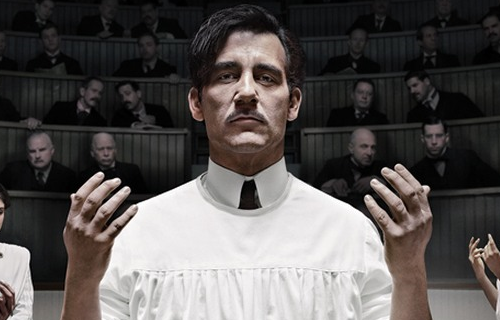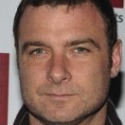HBO Interview: Dr. Stanley Burns, Medical Technical Advisor for 'The Knick'

Dr. Stanley Burns, M.D., Medical Technical Advisor to
The Original CINEMAX Series 'The Knick',
Discusses His Role in the Show
Set in New York City, circa 1900, THE KNICK is the story of the Knickerbocker Hospital, which is home to groundbreaking surgeons, nurses and staff who push the boundaries of medicine in a time of astonishingly high mortality rates and zero antibiotics. Starring Clive Owen and directed by Steven Soderbergh, the next episode of the drama series debuts Friday, Sept. 12 (10:00-11:00 p.m. ET/PT), exclusively on CINEMAX.
Dr. Stanley Burns, M.D., a surgeon and the leading medical and photographic historian specializing in turn-of-the-century medicine, is the show’s medical technical advisor, working closely with the production and actors to make the hospital scenes realistic and authentic to the times. In 1975, he founded The Burns Collection & Archive, which now houses more than a million photographs, including the largest private collection of medical photography. Burns has written 44 books and more than 1100 articles, and has curated dozens of exhibitions, all covering the time period of THE KNICK. In addition, Dr. Burns’ daughter, Elizabeth Burns, who runs the archive, serves as a consultant and archivist to the series, supplying reference materials, images and props.
Q: How long have you been collecting rare photographs and medical books?
STANLEY BURNS: I have been collecting medical books since 1960 and photographs since 1975.
Q: How did you get involved with THE KNICK?
SB: Creator and writer Jack Amiel, who wrote the script with Michael Begler, knew of my work and requested my input and involvement.
Q: What was your involvement in the show?
SB: I read the scripts for historical accuracy. I supervised the medical and surgical situations, making sure examinations and procedures were correct to the period. I supplied stories to the writers, and as the production unfolded, added events that were dramatic and were woven into the production, such as a case of severe spasms seen in meningitis, called opisthonos.
Q: What was it like working with Steven Soderbergh?
SB: It was beyond amazing. His analysis of every scene on set and its interpretation was a joy to watch. He holds and shoots his own camera, which weighs 35-plus pounds, and some of the precarious positions he undertook, such as leaning over the top of a ladder he climbed, were remarkable.
Q: Did Steven tell you what he wanted the action to be, and you then showed him how it would be done? Or did you show him how the real procedure would have been performed, and he then directed the scene around it?
SB: We did it both ways. I showed him and he showed me.
Q: After years of studying turn-of-the-century medicine in photographs and books, how did it feel to walk into a surgical theater with all of the old equipment and costumes, where hundred-year-old procedures were being simulated?
SB: It was absolutely mind-boggling. I felt transported back in time. I was especially stunned by the “doctors,” packed into the amphitheater audience, as each one was individually perfect in dress, demeanor and appearance. They looked as real as professors and surgeons of the time period.
Q: What medical training did you give to the actors?
SB: I established “The Knickerbocker Medical School & Hospital,” where we familiarized them with procedures and trained them in operative technique. Aside from discussing specific cases and diseases, I taught the principal “surgeons” and “surgical nurses” how to tie surgical knots quickly, how to use forceps to clamp blood vessels, and, especially, how to tie or cut and hold an extra clamp in their fingers so they could quickly swing it into action to grasp a bleeding vessel. It looked so great on screen!
Q: What skills did you teach the actors that differ from modern-day techniques?
SB: I taught them the hand-washing technique of the period, using three solutions, and also how to administer drop anesthesia techniques.
Q: THE KNICK isn’t a typical medical drama, visually depicting much more of the realities of surgery than most shows. Did that present challenges?
SB: The challenge was to make the operations and results medically accurate and realistic to the time period. Showing the real results of deadly disease and operative adventures necessitated uncomfortable views not usually shown to the public. Medical photographs were made for the limited audience of medical specialists. We are now vividly sharing not only the medical view and gruesome outcomes, but making it come alive.
Q: Were you surprised by how unflinching Steven’s camera was when filming the blood and guts of the surgeries?
SB: I was not surprised, as Steven’s professionalism is unquestioned. (It should also be noted that, in real life, putting your eye behind a camera’s viewfinder under the most horrific circumstances seems to distance the photographer – he becomes recorder and not a participant.)
Q: Does the series portray medicine truthfully?
SB: The series portrays medicine accurately and truthfully. The entire production company went out of their way to provide authentic settings, props and other details. The actors were trained to act like surgeons with the demeanor and affect of the time in minute detail. My photograph collection allowed accurate reproduction down to the type of sponge and wastebasket. Scenes that would be on screen for seconds were painstakingly prepared, sometimes for hours.
Q: What could surgical patients expect in 1900, as opposed to today?
SB: They could expect the doctor to tell him or her that if they survived the procedure, the hospital stay would be a long and treacherous path. Post-op infection and complications were common, but a 50% survival rate is better than 0%.
Q: What sorts of operations were being invented and perfected in this era?
SB: This was the time of the development of operations on the abdomen, lungs, brain, thyroid and other internal organs. Prior to this time, these areas were off-limits to elective surgery. Now, for the first time, tumors and other conditions in these areas could be successfully operated upon. A host of new instruments and techniques were being developed almost every day. Aseptic surgical principles provided the techniques for surgical advancement and this is illustrated in the series. The X-ray was invented in 1895 and the development of contrast materials allowed viewing and diagnosis of internal structures.
Q: How did you interact with the props and visual effects departments?
SB: I really enjoyed working with the props staff. We implemented instruments and designed for manufacture replicas from original instruments. Perhaps the most outstanding reproduction was the Lister antiseptic vaporizers, the standard for antiseptic surgery for several decades.
The visual effects team was fascinating to work with. A most medically correct and visually accurate effect was the regulation of blood flow of an open vessel to the heartbeat. If the patient was tachycardic, the heart beating fast, blood spurts would come at 100 per minute as the patient went into shock. As the heart rate slowed, the blood spurt rate would slow down to as little as 40 per minutes and less as they died. That’s what makes the show so realistic, as we mimicked real-life dramatic events.
Q: Were any other medical professionals, such as nurses, involved in the show?
SB: A surgical (operating room) instrument nurse was involved in the series and she prepared, that is, laid out the surgical tables with the instruments needed for each case. The props staff and I chose the instruments beforehand.
Q: Why is this era in medicine so important?
SB: It was a time of hope and achievement. Hundreds of diseases were identified and thousands of new medical therapies and surgical procedures were developed. The promise of medicine was achieved as death was removed from everyday life. Patients with previously untreatable diseases were for the first time successfully cured. The promise of medicine to truly help and heal was recognized for the first time. Surgeons were unquestionably the rock stars of this time.
Q: Who were the doctors of 1900, and how did they differ from the ones who came before them?
SB: By 1900, there were two forms of medical education. Proprietary medical schools, of which there were more than 100, made getting a medical degree very easy; these physicians were no different then other 19th-century practitioners. In 1893, a university education and residency training system was established in university medical centers. It was this group of physicians who carried a new torch of medical knowledge and expertise that advanced the profession into the 20th century.
Q: Who were the nurses of 1900?
SB: The nurses of 1900 were a new breed. There was better training, and it was becoming more interesting. Nurses were given more responsibilities, as well as tasks previously performed by physicians.
Q: The turn of the century was a time of massive change and progress in science, engineering and invention. How were prominent doctors like John Thackery, Clive Owen’s character, seen by the public?
SB: These doctors were the heroes of the times, and rightly so, as they were performing miracles every day by operating on previously untreatable conditions.
Q: How was medicine traditionally different in the U.S., as opposed to Europe?
SB: In Europe, one needed a university degree before entering medical school and medical education was a rigorous, regulated road of advancement, especially after graduation, when a surgeon was trained. Medical education in the U.S. was still, except for the new university programs, unreliable.
Q: Algernon Edwards, played by André Holland, is a key character. He’s a black man in a white man’s world. What was life like for a black doctor in America in 1900?
SB: This was the Jim Crow era. There were severe restrictions in the South and discrimination in the North. A black person’s education was typically restricted to an all-black medical school, and practices were usually limited to treating blacks, and, possibly, lower-class Caucasian patients. While the black physician in America was discriminated against, in Europe he or she was treated as an equal.
Q: How was the hospital different in 1900, as opposed to today?
SB: Until the beginning of the second decade of the 20th century, hospitals were mainly thought of as a place to die, not to be healed. The hospital of 1900 was just entering a time when patients were expected to live, rather than die.
Q: Anesthetics play an important role in THE KNICK. Ether, cocaine, morphine, opium: How new were they, and how much experience did doctors have with them?
SB: Ether had been used as general anesthetic in surgery since 1846, opium since the early 19th century, and morphine as an injection from the Civil War (1865). Cocaine’s use as a topical anesthetic was discovered in 1884. During the 1890s, cocaine’s use as a local infiltrative anesthetic was developed for a variety of surgeries. Doctors all over the world in 1900 were experimenting in developing new nerve block infiltrative techniques. This was a time when doctors experimented on themselves, and addiction and even death were common.
Q: What were the challenges that faced a downtown hospital like the Knick in 1900?
SB: The main challenge was to provide medical care to an ever-growing working class. As the Knickerbocker Hospital was privately funded, it had the same challenges we see today – to offer services and get compensation appropriate to its survival.
Q: If you could go back in time and give the doctors of the era one piece of equipment, or one piece of information, what would it be?
SB: That’s really easy: antibiotics.
- The Knick
Network:
- CINEMAX
- HBO
Sep 12th, 2014, 2:02 am
Image and Interview courtesy of CINEMAX/HBO.
Next Article
WATCH: Andrew 'Freddie' Flintoff Opens Up To Piers Morgan, Tonight on itvPrevious Article
The People's Strictly Announced For Comic Relief 2015
Aaron Sorkin's HBO Series Has A New Title?
Aaron Sorkin, the current king of scriptwriting, has been developing a new..
Liev Schreiber To Continue As HBO Sports Voice
Liev Schreiber doesn't need to fear anymore. Well, not that is was a great..

